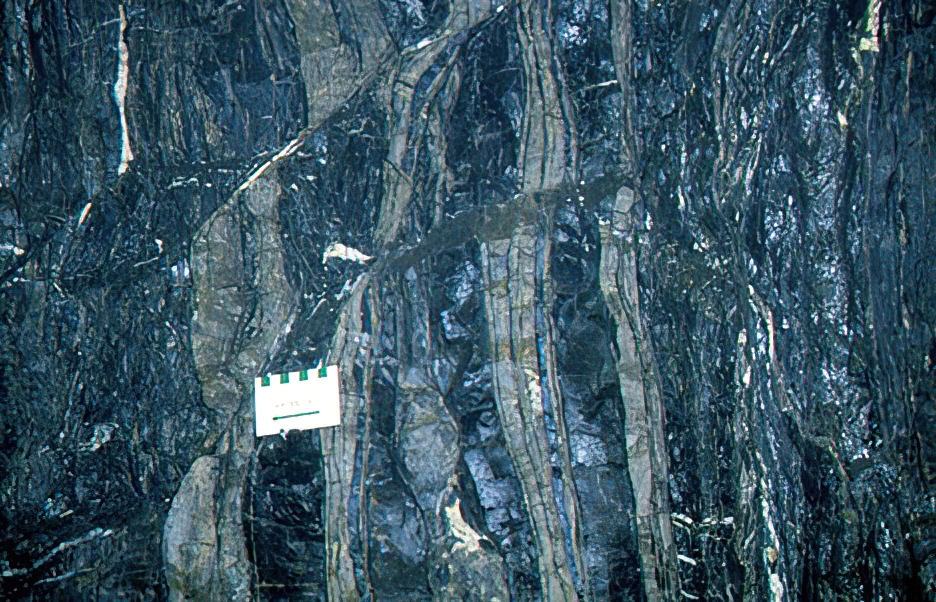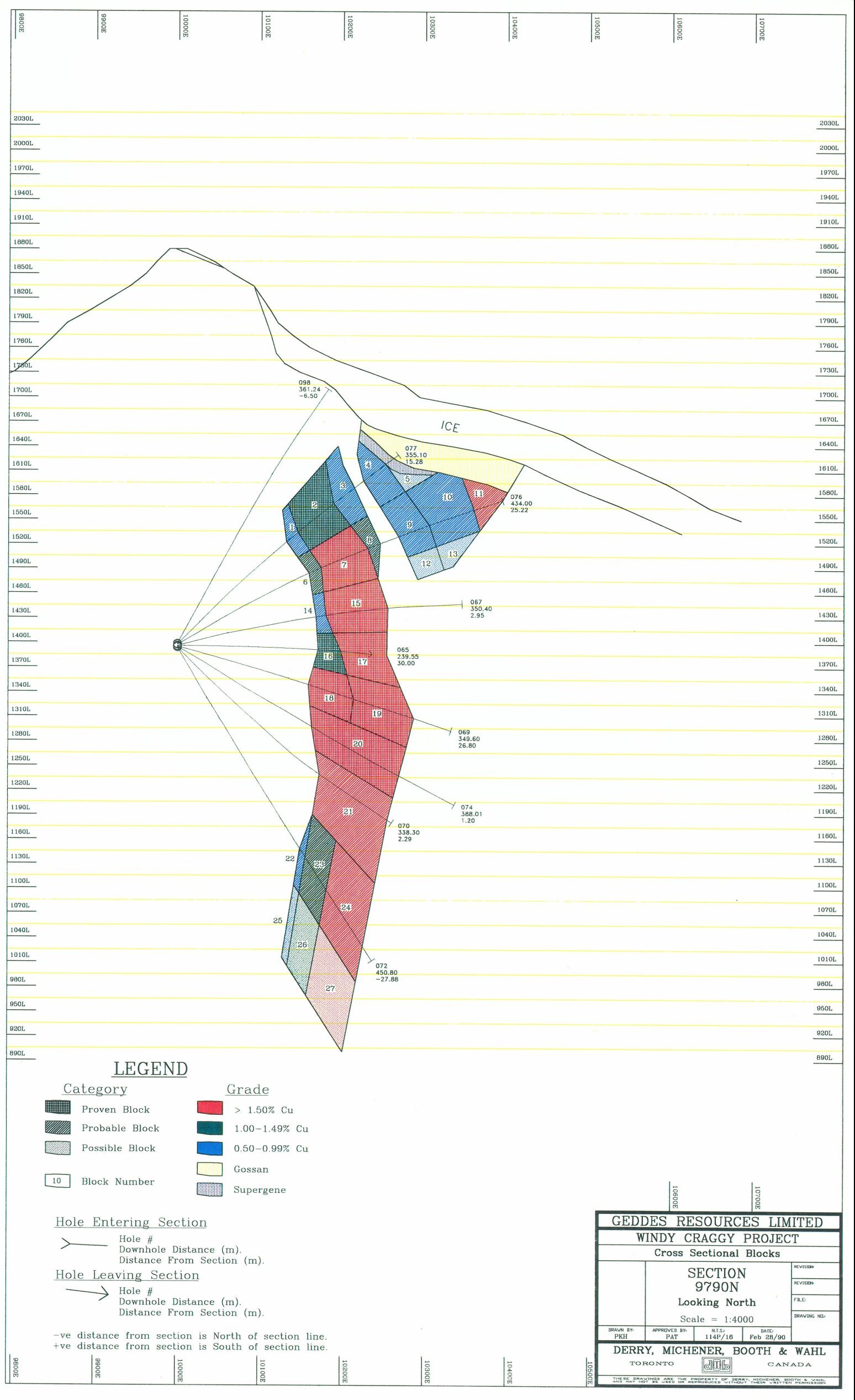Natural Acid Rock Generation, Drainage and Metal Leaching: Impact on Exploration, Mining and Reclamation

Picture courtesy Dr. Jan Peter
By Bruce Downing, M.Sc., PGeo.
Acid rock generation and drainage (ARGD) and metal leaching (ML) processes have been ongoing throughout geological time and will continue into the future. ARGD and ML are natural “reaction processes”. Additional to this are the man-made (anthropogenic) effects which exacerbate the processes by breaking up acid generating material so as to increase the rate of ML in many areas, be it mining, construction or other development projects that require removal and disposal of acid generating material.
 ARGD is produced by atmospheric oxidation of the relatively common iron-sulphur minerals pyrite (FeS2) and pyrrhotite (FeS) in the presence of naturally occurring sulphur consuming microbes. Significant amounts of heavy metals may be solubilized by this process as the pH is reduced through the generation of sulfuric acid.
ARGD is produced by atmospheric oxidation of the relatively common iron-sulphur minerals pyrite (FeS2) and pyrrhotite (FeS) in the presence of naturally occurring sulphur consuming microbes. Significant amounts of heavy metals may be solubilized by this process as the pH is reduced through the generation of sulfuric acid.
Since micas and clays can behave like acids in water, the low pH may not always be due to ARGD, though ARGD may be the initial cause of the breakdown of the original minerals leading to the development of micas and clays. ARGD impacts surface water and sub-surface water quality and may result in elevated levels of various chemical compounds and metals due to metal leaching.
In a mineralized area, oxide (gossan, limonite) and supergene development are a result of the ARGD process. Hence, geologists are on the outlook for gossanous outcrops.
Oxide – supergene processes, which can take place over millions of years, may result in supergene enrichment that forms significant tonnages and enriched grade which may be economical to mine. These types of deposits form dominant copper resources in South America. Some supergene enriched copper porphyry deposits and massive sulphide deposits have an overlying supergene manto (blanket).
Gossans and related alteration can be recognized and mapped using remote sensing data. This method has been used extensively and successfully by explorationists in locating prospective mineral sites generated from natural acid rock generation and related alteration of rocks, particularly in non-vegetated (arid) terrain.
It is interesting to note on maps that some topographic features have ARGD related descriptive names such as Gossan Island, Red Mountain, Red Creek or Sulphide Creek or Bitter Creek, Iron Creek and Alum Creek, as in the case of the Summitville Mine area in Colorado.
It might be appropriate to conclude that low grade mine waste dumps could in fact become mineral enriched (supergene) with geological time. The effects of ARGD have economic benefits or costs depending upon the time frame in which they are considered. The environment and landscape geochemistry adapts to changing conditions throughout geological time.
Generally, ARGD studies should be initiated during the exploration stage and continue during mining operations, reclamation and through post closure monitoring in order to characterize and differentiate between natural sources and anthropogenic sources of ARGD. This will also allow the environmental practitioner to perform accurate risk assessments for metals from the natural surroundings. Understanding the potential for ARGD is recognized as a key component of mine planning, waste rock disposal and reclamation. The primary objective of this planning is to reduce and control ARGD through proper handling and disposal of the rock most at risk of generating ARGD.
An example of a massive sulphide deposit with an in-situ overlying supergene zone is the Windy Craggy copper-cobalt-gold-silver-zinc deposit in northwestern British Columbia. This gossan – supergene zone has resulted in a potentially mineable resource. Drilling demonstrates supergene copper sulphide enrichment (chalcocite, native copper, chalcanthite) and limonite overlain by gossan caps enriched in gold and silver. An initial historical gossan and supergene resource was calculated using a 0.5% copper cutoff to be 3.2 million tonnes grading 2.55 % Cu, 0.82 g/t Au and 8.88 g/t Ag.
Additional information can be reviewed in Acid Mine Drainage, Rock Drainage, and Acid Sulfate Soils: Causes, Assessment, Prediction, Prevention, and Remediation, First Edition. Edited by James A. Jacobs, Jay H. Lehr, and Stephen M. Testa. 2014 John Wiley & Sons, Inc.
Another source of information is through the online acid rock drainage course from EduMine.
